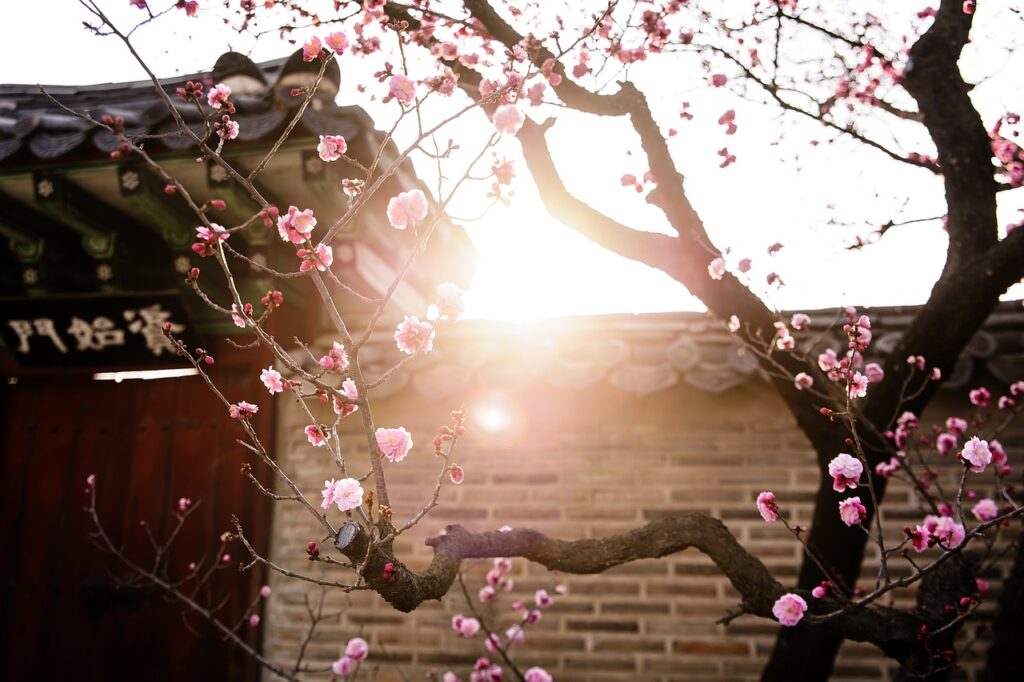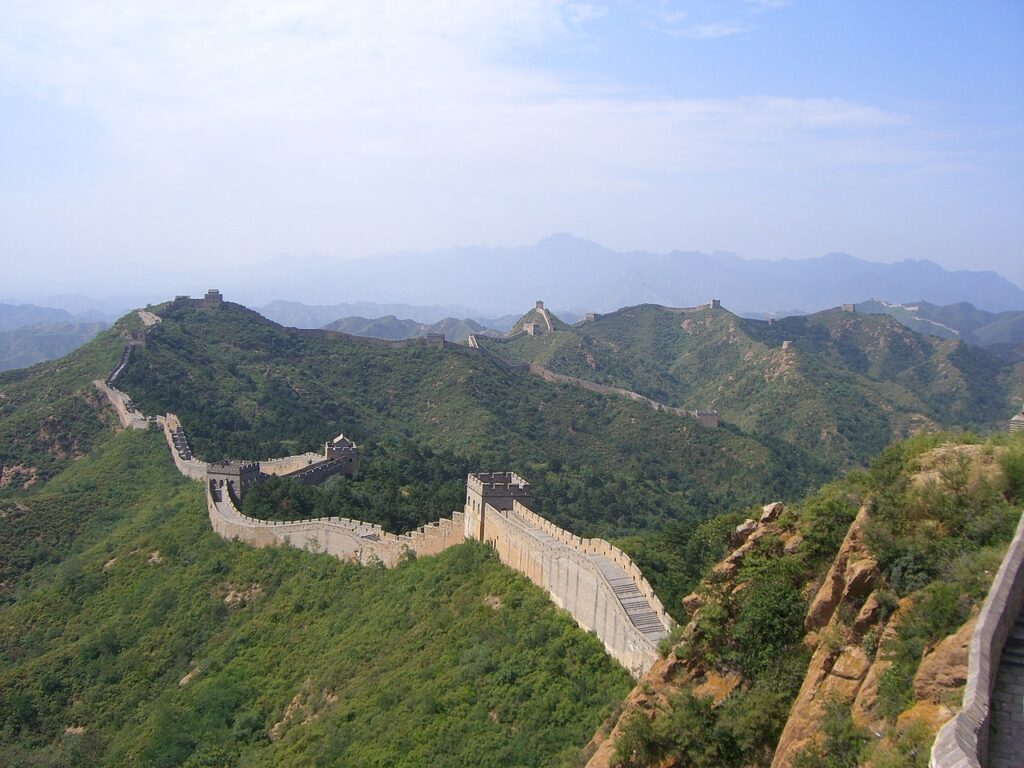China, con su larga historia y su espléndida cultura, es famosa en todo el mundo por su rico y diverso patrimonio cultural. Desde 1987, numerosos sitios de patrimonio cultural de China han sido inscritos en la Lista del Patrimonio Mundial de la UNESCO. En 2024, China cuenta con 56 sitios de Patrimonio Cultural Mundial. Estos sitios no solo muestran los gloriosos logros de la civilización china, sino que también proporcionan valiosos bienes culturales para el mundo.
La ciudad prohibida

La Ciudad Prohibida, también conocida como el Palacio Imperial de Pekín, sirvió como palacio imperial durante las dinastías Ming y Qing. Su construcción comenzó en 1406 durante el reinado del emperador Yongle de la dinastía Ming y se completó en 1420. Con una superficie de 720.000 metros cuadrados, la Ciudad Prohibida cuenta con más de 8.700 habitaciones, entre palacios, pabellones y puertas. No solo es una obra maestra de la arquitectura china antigua, sino también un símbolo de la última dinastía feudal de China, la dinastía Qing. En 1987, la Ciudad Prohibida fue declarada Patrimonio Cultural de la Humanidad, convirtiéndose en uno de los primeros lugares declarados Patrimonio Cultural de la Humanidad de China.
La Gran Muralla

La Gran Muralla es un importante proyecto de defensa militar de la antigua China, cuya construcción comenzó en el siglo VII a. C. Ha sufrido numerosas reconstrucciones y ampliaciones y se extiende a lo largo de 21.000 kilómetros. La Gran Muralla comienza en la montaña del Tigre, en la provincia de Liaoning, al este, y termina en el paso de Jiayuguan, en la provincia de Gansu, al oeste, atravesando montañas, valles y desiertos. La Gran Muralla es un símbolo de la sabiduría y la fuerza del antiguo pueblo chino y un testimonio de la integración histórica y los conflictos entre los diversos grupos étnicos de China. En 1987, la Gran Muralla fue declarada Patrimonio Cultural de la Humanidad.
El Templo del Cielo
Situado en la parte sur de Pekín, el Templo del Cielo era el lugar donde los emperadores de las dinastías Ming y Qing ofrecían sacrificios al cielo y rezaban por una buena cosecha. Su construcción comenzó en 1420 durante el reinado del emperador Yongle de la dinastía Ming. Con una superficie de aproximadamente 2,73 millones de metros cuadrados, el Templo del Cielo es un ejemplo notable de la antigua arquitectura sacrificial china. Las estructuras principales incluyen la Sala de Oración por las Buenas Cosechas, la Bóveda Imperial del Cielo y el Altar del Montículo Circular, conocidos por su gran escala y su exquisito arte arquitectónico. En 1998, el Templo del Cielo fue declarado Patrimonio Cultural de la Humanidad.
El palacio de verano
El Palacio de Verano, situado en los suburbios del noroeste de Pekín, es una obra representativa de los jardines imperiales de la dinastía Qing. Su construcción comenzó en 1750 durante el reinado del emperador Qianlong y posteriormente fue restaurado varias veces debido a la guerra. Con una superficie de unos 2,9 millones de metros cuadrados, el Palacio de Verano presenta como componentes principales el lago Kunming y la colina de la Longevidad, mostrando la esencia del arte clásico chino de los jardines. Es aclamado como el "Museo de los Jardines Reales". En 1998, el Palacio de Verano fue declarado Patrimonio Cultural de la Humanidad.
Las cuevas de Mogao
Las cuevas de Mogao, situadas en Dunhuang, provincia de Gansu, son uno de los mayores y mejor conservados depósitos de arte budista del mundo. La construcción de las cuevas de Mogao comenzó en el año 366 d. C. y albergan una gran cantidad de murales, esculturas pintadas y manuscritos que representan más de mil años de arte budista, desde el período de los Dieciséis Reinos hasta la dinastía Yuan. En 1987, las cuevas de Mogao fueron declaradas Patrimonio Cultural de la Humanidad.
El mausoleo del primer emperador Qin y el ejército de terracota
El Mausoleo del Primer Emperador Qin y el Ejército de Terracota, ubicado en Xi'an, provincia de Shaanxi, es una de las estructuras funerarias más grandes y complejas de la antigua China. La construcción del mausoleo comenzó en el año 246 a. C. Las fosas del Ejército de Terracota contienen miles de soldados y caballos de arcilla de aspecto realista, que muestran el extraordinario arte escultórico y la organización militar de la antigua China. En 1987, el Mausoleo del Primer Emperador Qin y el Ejército de Terracota fueron declarados Patrimonio Cultural de la Humanidad.
La antigua ciudad de Lijiang
La antigua ciudad de Lijiang, situada en Lijiang, provincia de Yunnan, es una ciudad antigua bien conservada del grupo étnico naxi. Fundada durante la dinastía Song, Lijiang es conocida por su cultura naxi única, su diseño urbano antiguo y sus hermosos paisajes naturales. La ciudad cuenta con numerosos edificios y calles antiguas bien conservadas, lo que demuestra la sabiduría y la creatividad del pueblo naxi. En 1997, la antigua ciudad de Lijiang fue declarada Patrimonio Cultural de la Humanidad.
La antigua ciudad de Pingyao
La antigua ciudad de Pingyao, situada en la provincia central de Shanxi, es una de las ciudades antiguas mejor conservadas de las dinastías Ming y Qing en China. Fundada durante la dinastía Zhou occidental, la ciudad se amplió en 1370 durante el reinado del emperador Hongwu de la dinastía Ming. La antigua ciudad contiene numerosos edificios bien conservados de las dinastías Ming y Qing, como murallas, oficinas gubernamentales, oficinas de seguridad y establecimientos comerciales, que muestran la vida urbana y la prosperidad comercial de la antigua China. En 1997, la antigua ciudad de Pingyao fue declarada Patrimonio Cultural de la Humanidad.
Los jardines clásicos de Suzhou
Los Jardines Clásicos de Suzhou, ubicados en Suzhou, provincia de Jiangsu, son representantes ejemplares del arte clásico de los jardines chinos. Los jardines datan del Período de Primavera y Otoño y han sido construidos y ampliados a lo largo de los siglos, formando estilos de jardines únicos representados por el Jardín del Administrador Humilde, el Jardín de la Demora y el Jardín del Maestro de las Redes. Conocidos por sus intrincados diseños, ricos paisajes y exquisita arquitectura, los Jardines Clásicos de Suzhou son reconocidos en todo el mundo. En 1997, los Jardines Clásicos de Suzhou fueron declarados Patrimonio Cultural de la Humanidad.
El paisaje cultural del lago Oeste de Hangzhou
El paisaje cultural del lago Oeste de Hangzhou, ubicado en Hangzhou, provincia de Zhejiang, es famoso por su hermoso paisaje natural y su rico patrimonio histórico y cultural. Rodeado de montañas, el lago Oeste está salpicado de numerosos lugares pintorescos y sitios históricos famosos, como la Calzada Su, la Calzada Bai, la Pagoda Leifeng y los Tres estanques que reflejan la luna. El lago Oeste ha sido durante mucho tiempo una inspiración para poetas y artistas chinos y es un símbolo importante de la cultura tradicional china. En 2011, el paisaje cultural del lago Oeste de Hangzhou fue declarado Patrimonio Cultural de la Humanidad.
El centro histórico de Macao
El Centro Histórico de Macao, ubicado en la Región Administrativa Especial de Macao, es un testimonio del intercambio cultural entre Oriente y Occidente. Desde mediados del siglo XVI, Macao ha sido un importante centro de intercambio cultural entre China y el mundo occidental. El centro histórico conserva numerosos edificios históricos de estilos arquitectónicos portugueses y chinos, como las Ruinas de San Pablo, el Templo A-Ma y la Plaza del Senado. En 2005, el Centro Histórico de Macao fue declarado Patrimonio Cultural de la Humanidad.
Los grabados rupestres de Dazu
Las tallas rupestres de Dazu, situadas en el distrito de Dazu, en Chongqing, son ejemplos representativos del arte de la talla de roca china del período tardío. La construcción de las tallas rupestres de Dazu comenzó durante la dinastía Tang y se concentran en las zonas de Beishan y Baodingshan. Las tallas representan una rica variedad de temas, incluidas historias budistas, taoístas y confucianas, así como folclore. Conocidos por sus exquisitas técnicas de tallado y sus profundas connotaciones culturales, los grabados rupestres de Dazu fueron declarados Patrimonio Cultural de la Humanidad en 1999.
El Tulou de Fujian
Los tulou de Fujian son edificios residenciales únicos ubicados en la región montañosa del suroeste de la provincia de Fujian. Construidos a partir de las dinastías Song y Yuan, los tulou se caracterizan por sus grandes muros de tierra y sus distintivas formas circulares y cuadradas. Estos edificios sirvieron como importantes estructuras de defensa y vivienda comunitaria para el pueblo hakka. Los tulou de Fujian demuestran el encanto único de la arquitectura tradicional china y la cultura hakka. En 2008, los tulou de Fujian fueron declarados Patrimonio Cultural de la Humanidad.
Las grutas de Yungang
Las Grutas de Yungang, situadas en Datong, provincia de Shanxi, son ejemplos representativos del arte budista chino en grutas. La construcción de las Grutas de Yungang comenzó durante la dinastía Wei del Norte e incluye 45 cuevas principales que albergan estatuas budistas de gran escala y murales exquisitos, que muestran el arte budista desde la dinastía Wei del Norte hasta las dinastías Sui y Tang. En 2001, las Grutas de Yungang fueron declaradas Patrimonio Cultural de la Humanidad.
El complejo turístico de montaña de Chengde y sus templos periféricos
El complejo de montaña de Chengde y sus templos periféricos, ubicado en Chengde, provincia de Hebei, son obras representativas de los jardines imperiales y la arquitectura religiosa de la dinastía Qing. La construcción comenzó en 1703 durante el reinado del emperador Kangxi y continuó durante más de 80 años. El complejo cubre un área de aproximadamente 5,64 millones de metros cuadrados e incluye el complejo de montaña, los ocho templos periféricos y otros lugares pintorescos. Es conocido por su gran escala, diseño exquisito e integración armoniosa con el paisaje natural. En 1994, el complejo de montaña de Chengde y sus templos periféricos fueron declarados Patrimonio Cultural de la Humanidad.
Los santuarios del panda gigante de Sichuan
Los Santuarios del Panda Gigante de Sichuan, ubicados en la provincia de Sichuan, son el hábitat natural más grande del mundo para el panda gigante. Los santuarios incluyen varias reservas naturales, como Wolong, la montaña Siguniang y la montaña Jiajin, que protegen una gran cantidad de flora y fauna raras, en particular al panda gigante en peligro de extinción. En 2006, los Santuarios del Panda Gigante de Sichuan fueron declarados Patrimonio Cultural de la Humanidad.
Monte Huangshan
El monte Huangshan, situado en la provincia meridional de Anhui, es famoso por sus “cinco maravillas”: pinos peculiares, rocas grotescas, mar de nubes, aguas termales y nieve invernal. Desde la antigüedad, el monte Huangshan ha sido una fuente de inspiración para los literatos y artistas chinos, ganándose el título de “la montaña más espectacular bajo el cielo”. En 1990, el monte Huangshan fue declarado Patrimonio Cultural de la Humanidad.
Monte Tai
El monte Tai, situado en la provincia central de Shandong, es la principal de las cinco grandes montañas de China y es famoso por su majestuoso paisaje natural y su profundo patrimonio cultural. Desde la antigüedad, el monte Tai ha sido un importante lugar de ceremonias sacrificiales imperiales y un símbolo de unidad nacional. En 1987, el monte Tai fue declarado Patrimonio Cultural de la Humanidad.
Los sitios de patrimonio cultural mundial de China no sólo muestran los gloriosos logros de la civilización china, sino que también proporcionan valiosos bienes culturales para el mundo. Estos sitios de patrimonio cultural no sólo son símbolos importantes de la historia y la cultura de China, sino también tesoros comunes de la civilización humana. Proteger y transmitir estos sitios de patrimonio cultural es responsabilidad de todos y cada uno de nosotros. Al comprender y apreciar estos sitios de patrimonio cultural mundial, podemos comprender mejor la riqueza y diversidad de la civilización humana. En el futuro, debemos seguir protegiendo estos preciosos sitios de patrimonio cultural, permitiéndoles brillar aún más en la nueva era.
